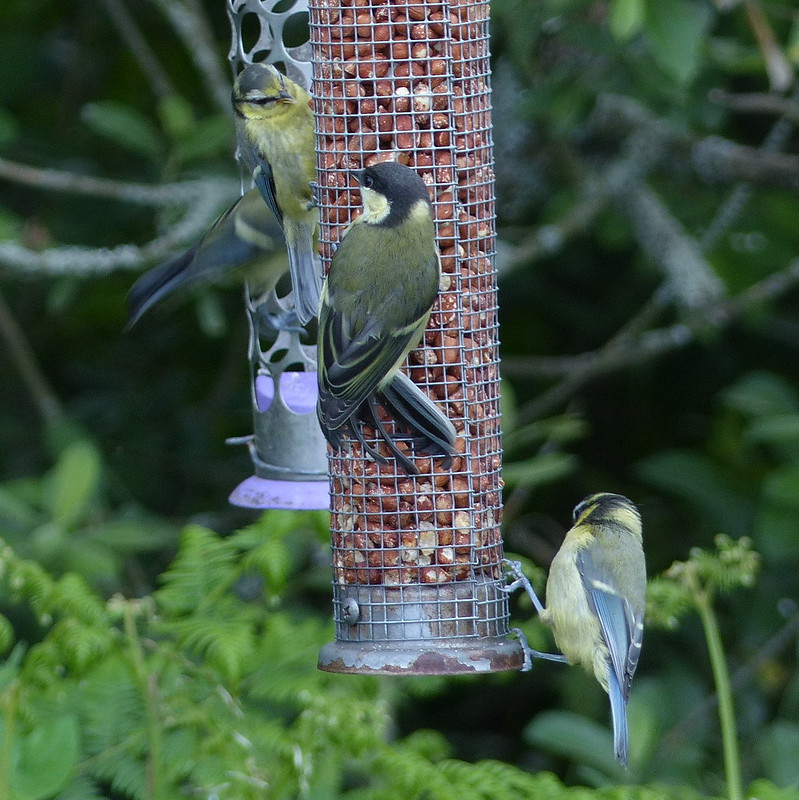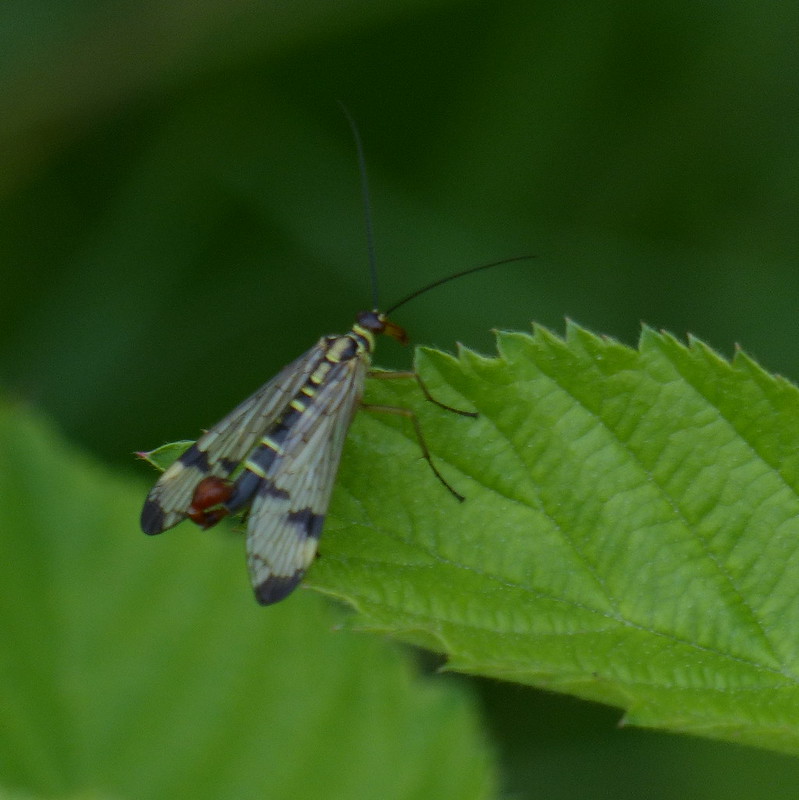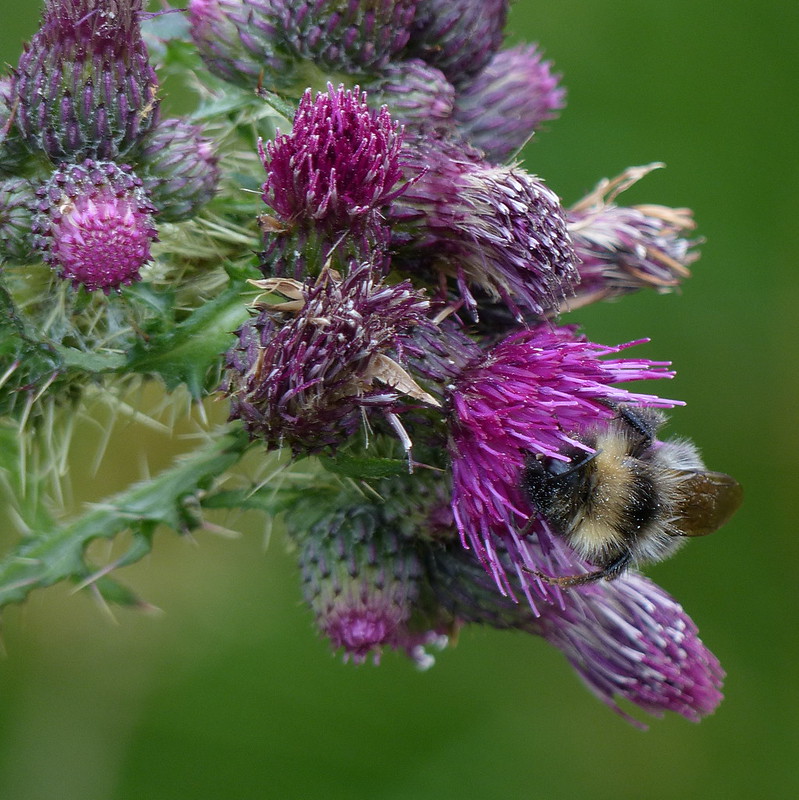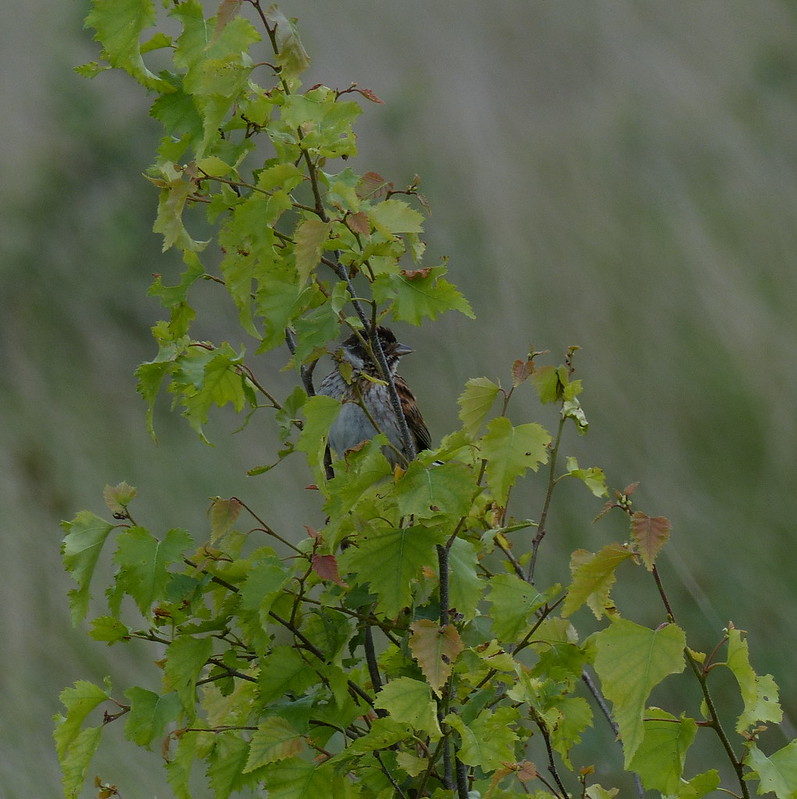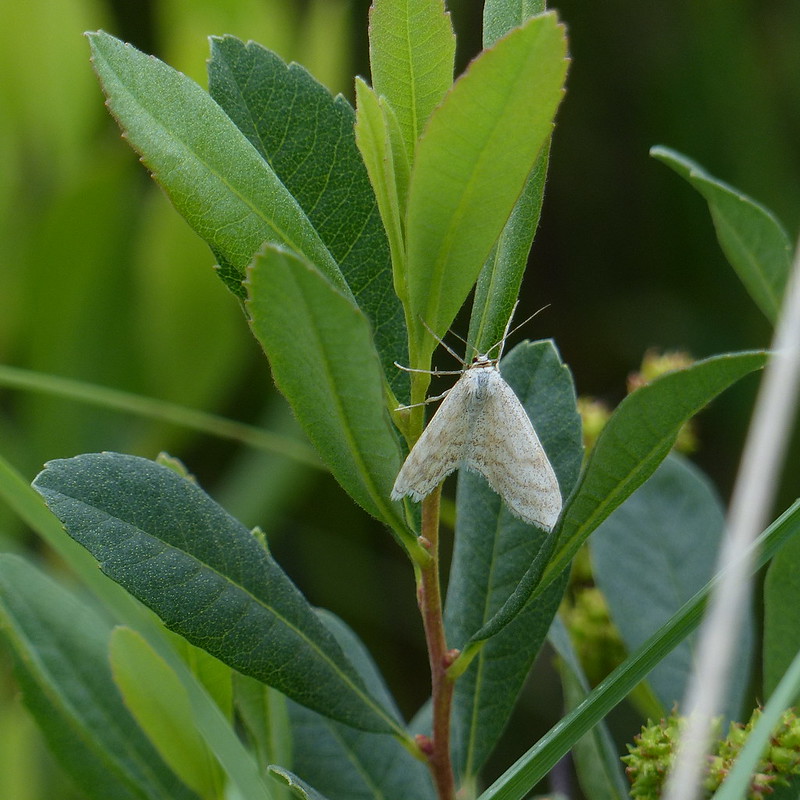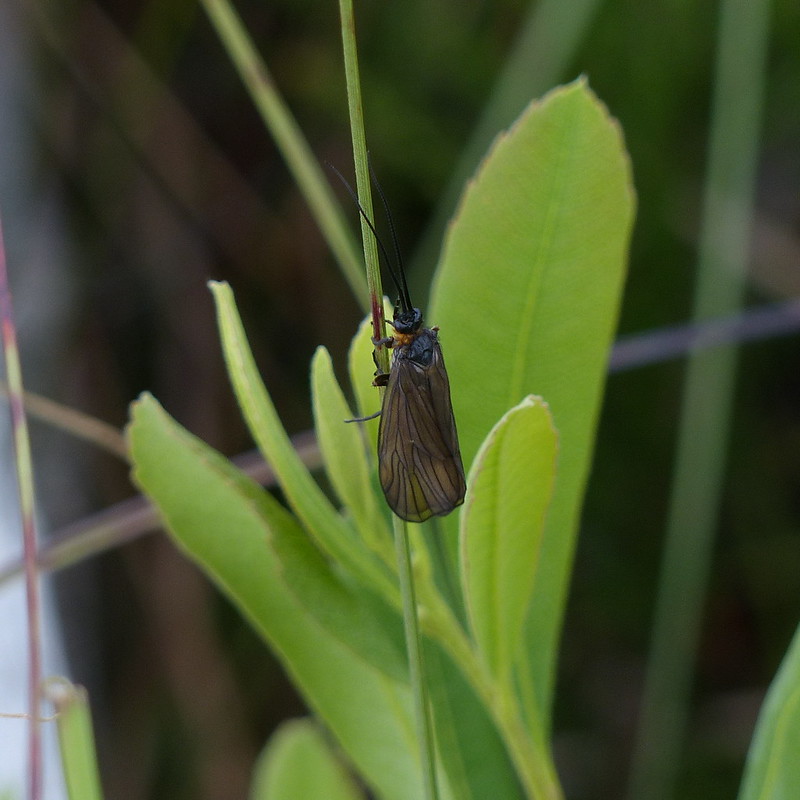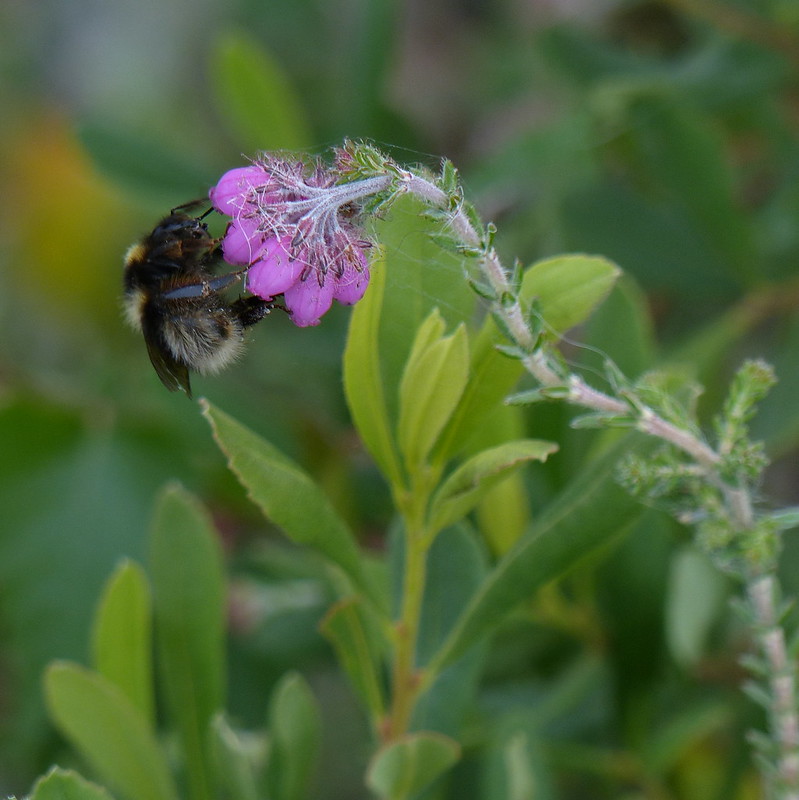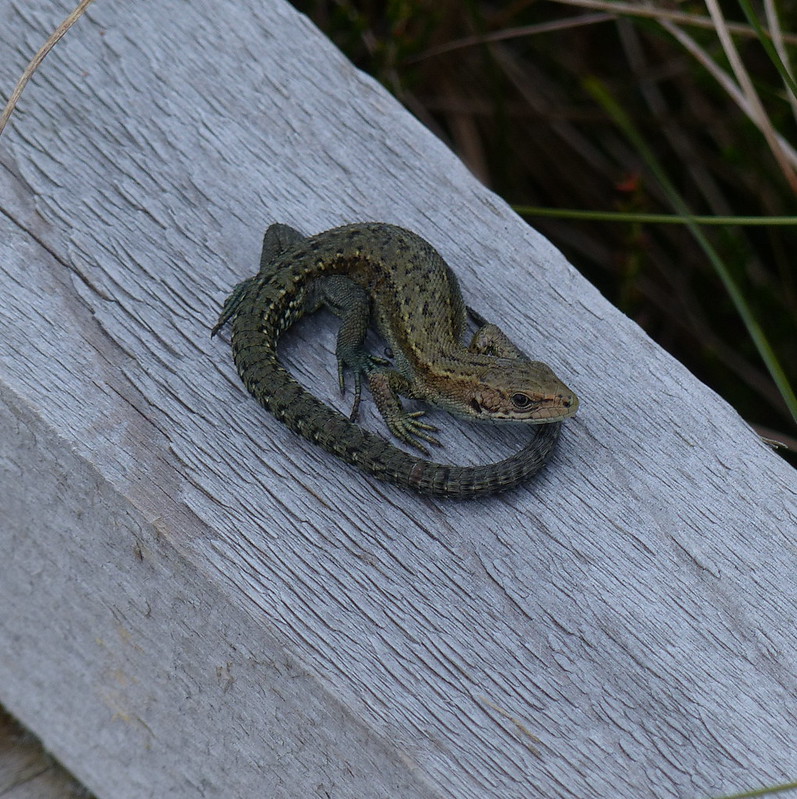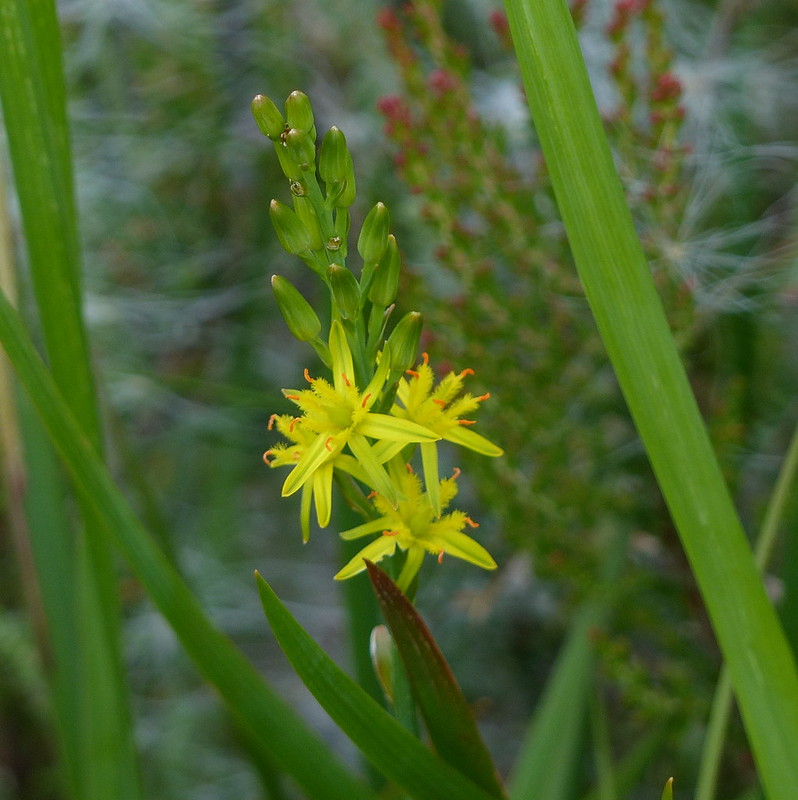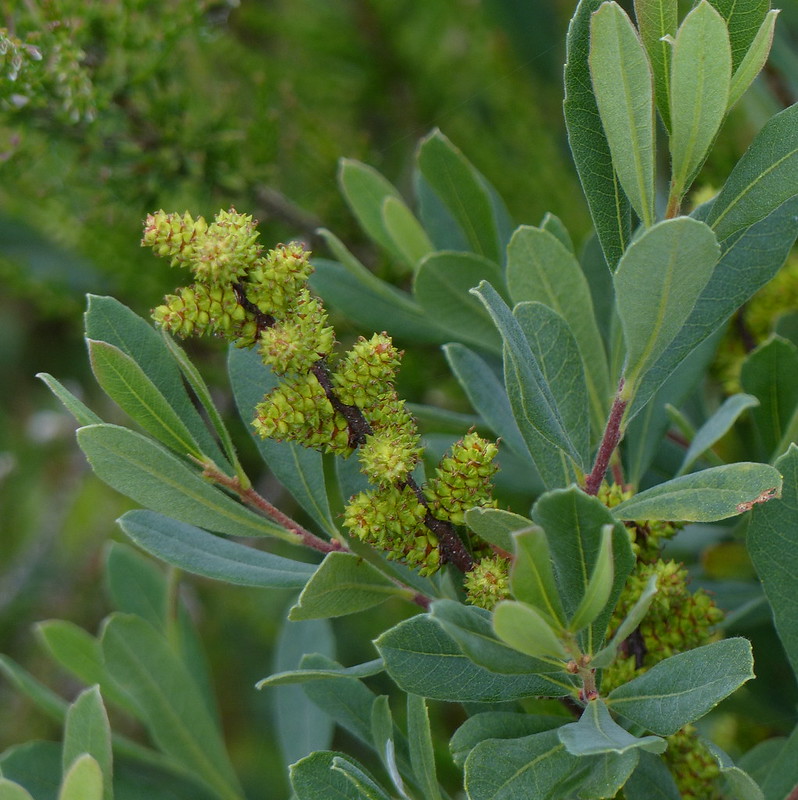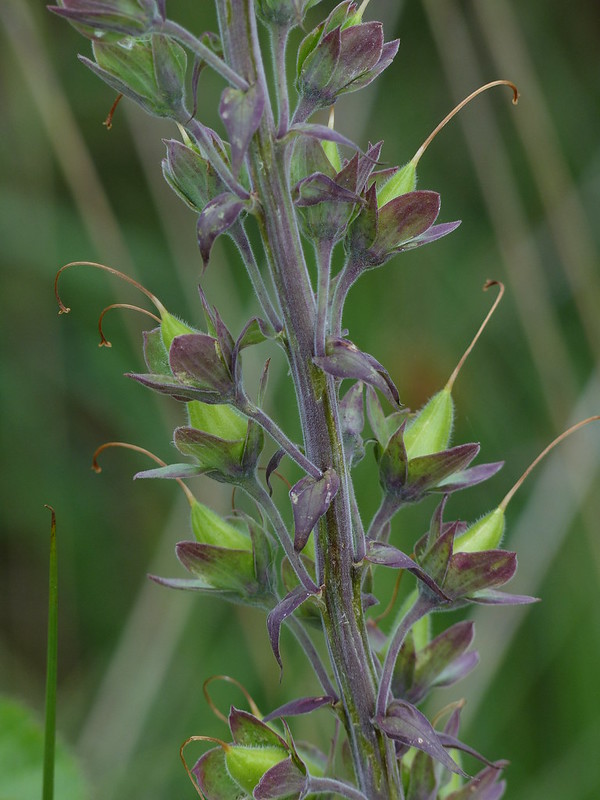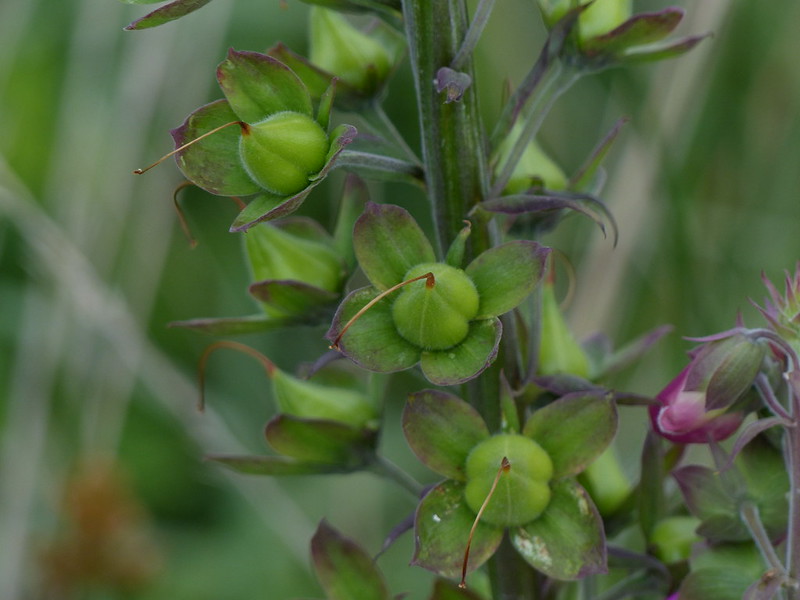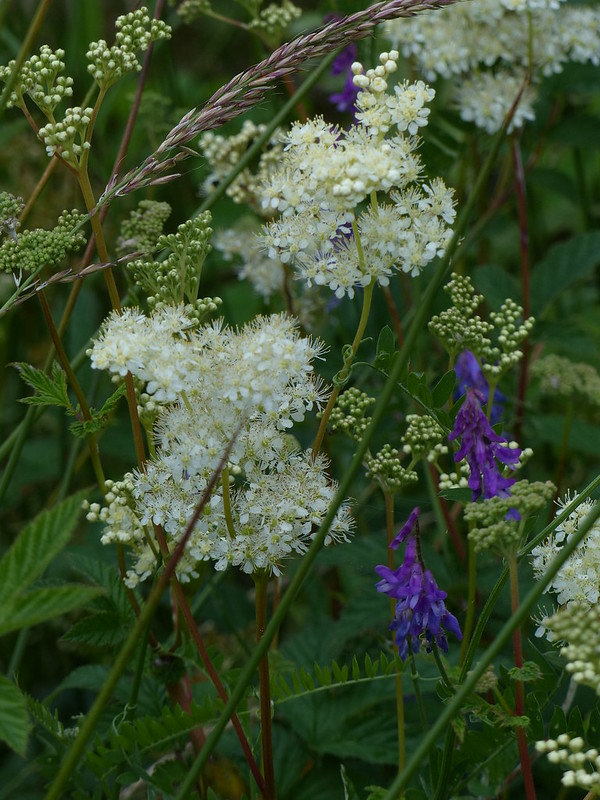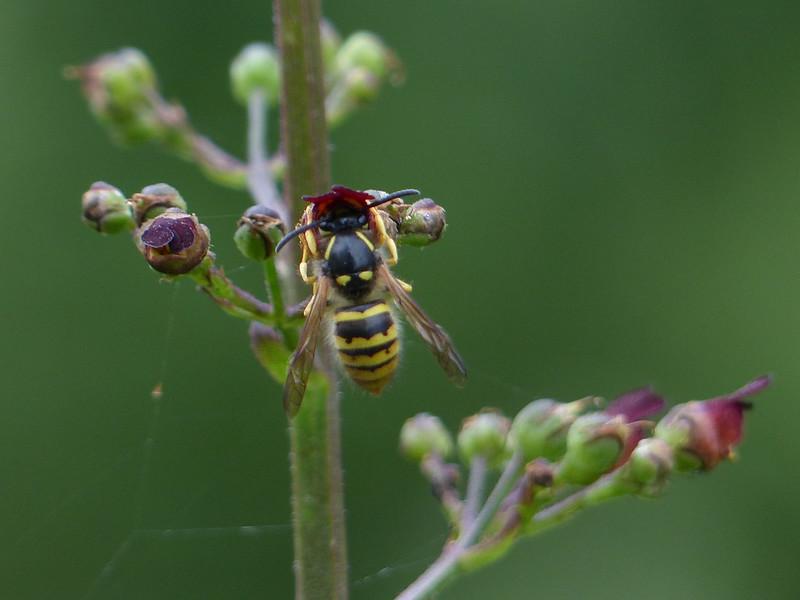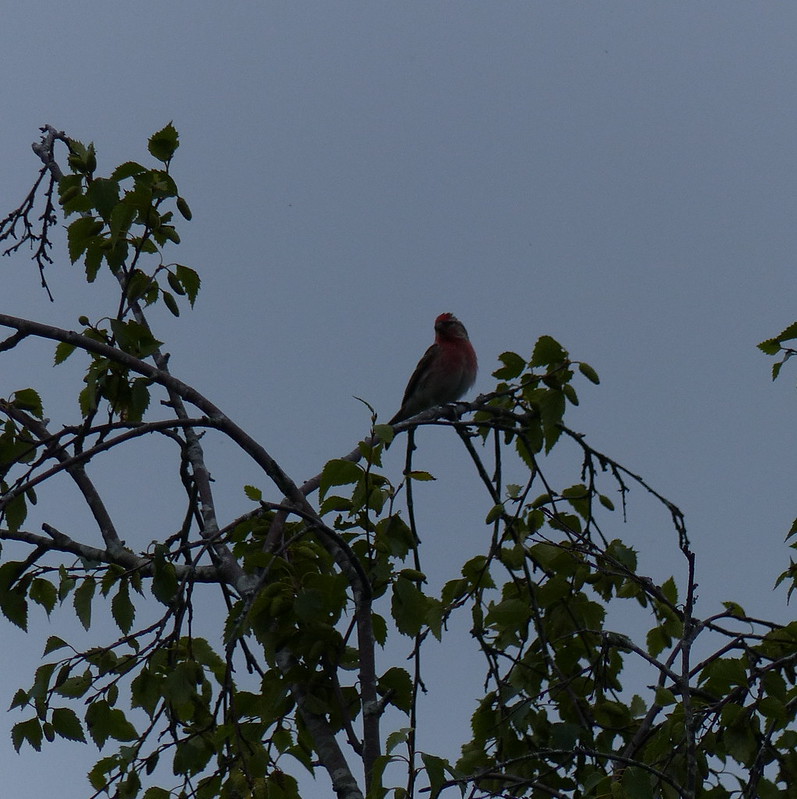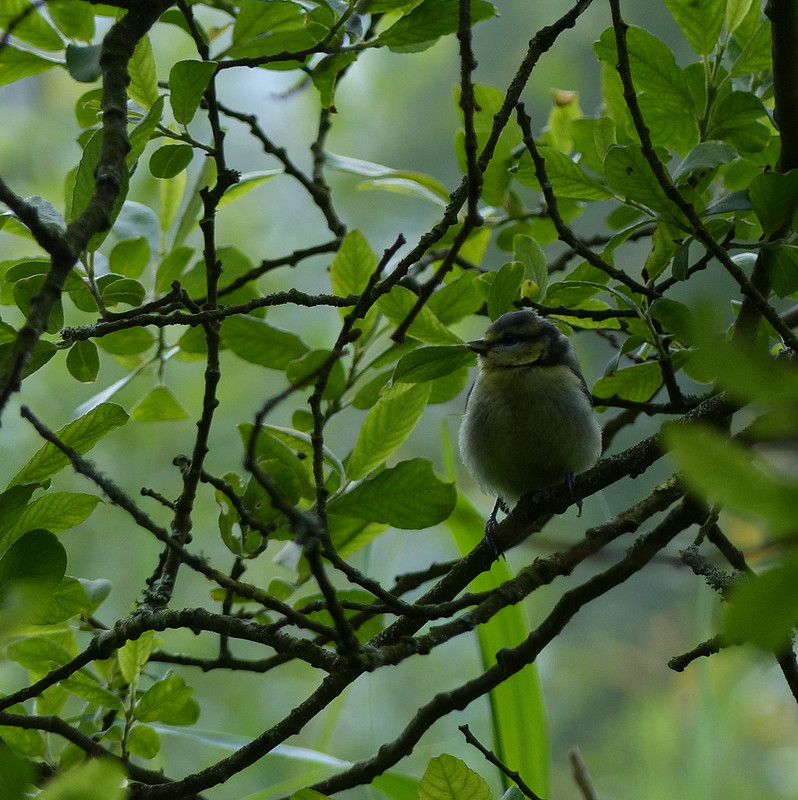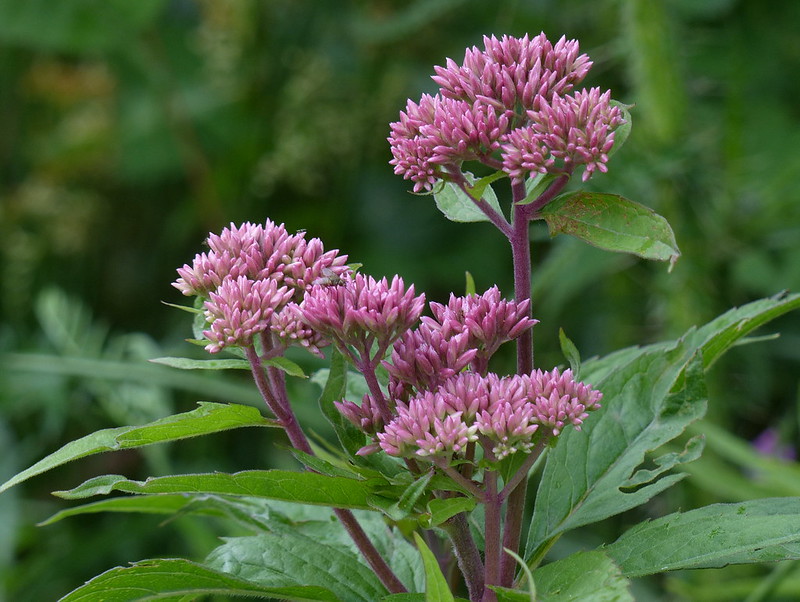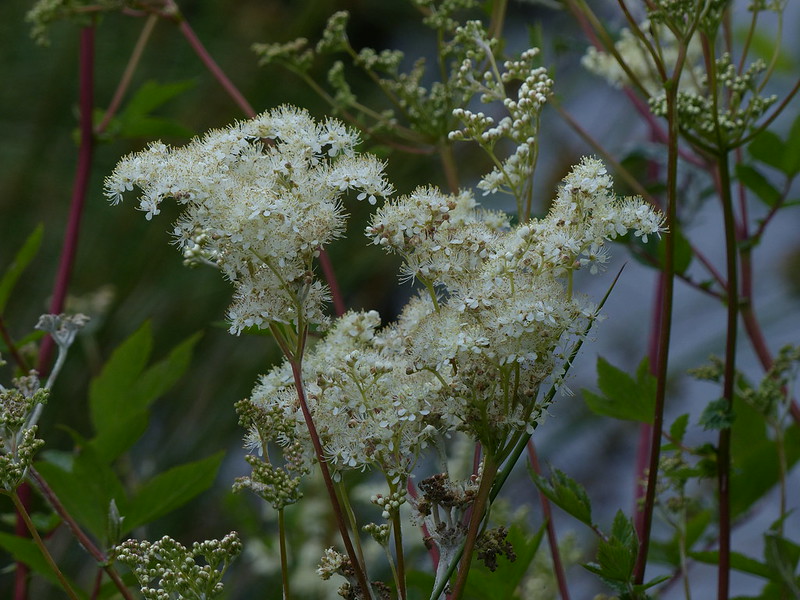A juvenile Great Tit and a Blue Tit share a moment.
Male Scorpion Fly – rubbish picture, but you can see the appendage which earns its name.
Lots of these at Foulshaw at the moment, under the trees at the edge of the reserve.
Meadow Vetchling, perhaps?
Reading John Wright has made me think about the ways in which insects and fungi are often adapted to exploit particular plants. I saw wasps feeding on Figwort a few times on this visit. A Figwort flower and the head of a wasp seem to be a perfect fit.
The dark wings here make me think that this could be a Cuckoo Bumblebee, on a thistle obviously, Marsh Thistle probably.
Male Reed Bunting – seems almost obligatory now.
After the diverse, but elusive, moths and butterflies of my last visit, this time these small pale moths were to be seen all around the boardwalks in the more open, heathland areas. It’s a ‘wave’. But there are lots of those to choose from: Common Wave, White Wave, Small White Wave, Cream Wave, Small Cream Wave, Silky Wave, Grass Wave – and that’s just the ones which are pale with brownish stripes. Some of these species live in woodland, some have marginal black dots on their wings, or more prominent dark spots in the centre of their hind-wings, or on both wings, none seemed to fit the bill perfectly, but I’m going to tentatively plump for Common Wave, as it’s the best fit as far as I can tell.
An Alderfly. Perhaps.
Another Cuckoo Bumblebee? On Cross-leaved Heath.
I spoke to somebody, who told me they had spoken to somebody else earlier, who had photographed six Adders that day at the reserve, one of them basking on a boardwalk. I didn’t see any snakes at all, but I did spot this Common Lizard.
The ‘cotton’ from the Bog Cotton has completely coated some areas.
Bog Asphodel.
Bog Myrtle catkins.
Green Lacewing. There are 18 British species and this is one of those, I’m fairly sure.
Foxglove seed-heads. Handsome aren’t they.
It’s been interesting to visit three weeks running and see how things have progressed. The Meadowsweet is flowering now. Here’s some with Tufted Vetch…
I’m sure that I’ve read somewhere that blue and white flowers in a garden together traditionally signify The Virgin Mary, but I can’t remember where I read that, so I may be wrong. It is, however, the kind of useless detail which I tend to remember, unlike, for instance, important things like people’s names.
Soft Rush.
See: wasp, Figwort – made for each other. Britain has nine species of Social Wasp, but I’m going to tentatively identify this as a Tree Wasp – Dolichovespula sylvestris.
I’m quite chuffed with this photo, even though it’s clearly rubbish. I’ve been seeing these birds at Foulshaw and listening to their chatter, and thinking that they were Linnets, but not being sure. I’ve taken lots of photos, but only ever getting silhouettes, which looked right, but hardly proved conclusive. This one is only a slight improvement, but does show a bit of red and confirms that they are Linnets after all.
A Saint John’s-wort. There are several different Saint John’s-worts. If I’d taken clear photos of the leaves and the stem, then maybe, just maybe, I would know which this was. But I didn’t; so I don’t.
Blue Tit.
Common Valerian.
Meadowsweet. A powerful analgesic apparently.
Figwort and Bindweed.
Figwort grows at Lambert’s Meadow and also in Middlebarrow Wood and probably in lots of other places locally, but it’s not a very inspiring plant where I’ve seen it. At Foulshaw, however, it really seems to thrive – it’s always tall, but here it has huge thick stems and masses of flowers and is generally more impressive and imposing than it is elsewhere that I’ve seen it.
Having been impressed, I decided to look Figwort up in ‘Hatfield’s Herbal’. Apparently Figwort, like Meadowsweet, had a widespread reputation as a painkiller. Mothers used it to quiet teething children. It was renowned as a treatment for piles, once known as ‘figs’ and hence the name. And it was also known as a treatment for Scrofula, now called Glandular Tuberculosis, but once called The King’s Evil, because the touch of a monarch was supposed to cure the disease. Figwort was apparently regarded as the next best thing.
Now this put me in mind of John Graunt and his ground-breaking 1663 book Natural and Political Observations Made upon the Bills of Mortality, which I like to use when I’m teaching Statistics. Graunt carried out an analysis of the causes of death recorded in London Parishes over several years.

I don’t particularly enjoy teaching Statistics, but lists like the one above never fail to get students engaged. Both the figures and the causes of death are eye-opening. Simply being a child (a Chrisome is a child less than one month old) is the most common cause of death. ‘Kild by feveral accidents’, “Bit with a mad dogge’ and ‘Suddenly’ usually illicit comment, as does the fact that 454 people have died by ‘Teeth’, 28 by “Wormes’, 114 by ‘Surfet’ (which, yes, is eating too much) and 6 by ‘Murtherd’. Another similar page has ‘Wolfe’ as a cause of death. What are we to make of ‘Rising of the Lights’ or ‘Plannet’ or indeed ‘King’s Evil’? You can find suggestions on this fascinating website. Timpany, disappointingly, is not death by Kettle Drum.
